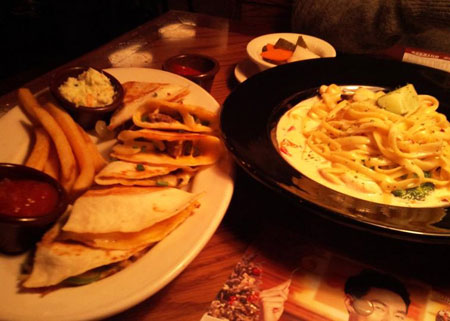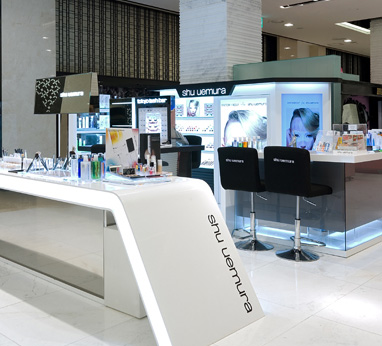- California Assembly OKs highest minimum wage in nation
- S. Korea unveils first graphic cigarette warnings
- US joins with South Korea, Japan in bid to deter North Korea
- LPGA golfer Chun In-gee finally back in action
- S. Korea won’t be top seed in final World Cup qualification round
- US men’s soccer misses 2nd straight Olympics
- US back on track in qualifying with 4-0 win over Guatemala
- High-intensity workout injuries spawn cottage industry
- CDC expands range of Zika mosquitoes into parts of Northeast
- Who knew? ‘The Walking Dead’ is helping families connect
Outback·TGIF·Baskin Robbins All Flourishing in Korea
By Kim Hye-sung
International chain family restaurants, led by Outback Steakhouse, are recording stellar growth in Korea. Just what is the secret behind their success?
Global brand companies such as Outback Steakhouse, TGIF, and Baskin Robbins’ 31 have succeeded in so-called ‘glocalization’: partnering with local agents, diversifying its products to suit Korean consumer’s needs, and marketing its products through aggressive advertisement.
Outback’s total revenue from 110 stores in Korea jumped 8 percent, from 330 billion won ($310 million) in 2011 to 356.4 billion won ($335 million) in 2012. TGIF’s total revenue from 90 stores soared 11 percent, from 70.4 in billion won ($66.1 million) in 2011 to 78.6 billion won ($73.8 million) in 2012. Baskin Robbins has over 50 percent of market share in the ice-cream industry, topping 85 billion won ($79.8 million) in revenue in 2012, according to industry sources.
Korea is a difficult market for multinational companies to operate in, due to fierce competition against domestic rivals and Korean consumers’ picky palates. Global retail giants such as Walmart and Carrefour shut down their businesses after 8 years and 10 years of operation, respectively. P&G and GM have failed to gain a foothold in the Korean cosmetics and automobile market. Even quick service restaurant chains including McDonald’s and KFC are slashing the number of chain stores they operate in Korea. In this context, these family restaurants’ success in Korea seems even more remarkable.
So what is their marketing strategy? It’s ‘glocalization’ – a combination of leveraging their global brand value with localized products and services.
First, these companies found local partners with expertise by leveraging their global brand value. For instance, Outback Steakhouse partnered with CEO Chung In-tae, who had the experience of opening 17 TGIF chains.
Second, these companies succeeded in diversifying their products to meet Korean consumers’ needs. For instance, Outback Steakhouse added barbeques with more garlic to the menu to target Koreans in their 30s and 40s, who dislike the greasy taste of steaks. “Outback also reduced servings per dish, cut menus with meat, increased menus with salad and pasta while adding kimchi and squid as new ingredients,” CEO Chung said.
Pizza Hut continuously developed new menus and products to attract Korean customers. Its menus, which include bulgogi pizza, rich gold pizza, and cheese crust gold pizza ( specifically designed to suit Korean customers who prefer sweet potatoes and bulgogi sauce), are re-exported to South East Asia, the U.S., China, and Japan.
In 2012, its new “wow box” – composed of crispy chicken (a favorite dish in Korea), salad, and pizzas – made 10,000 orders per day, selling one box every three seconds. Robbins Korea introduced “incredible garden” ice-cream cakes in order to attract Korean consumers during off-seasons. Sweet and cold, it captured the hearts of people in the U.A.E., the U.S. and Saudi Arabia.
Koreans are very picky in their culinary tastes and sensitive to market trends. But here’s the good news: companies that succeeded in localizing their products in Korea will blossom in the global market.
















Pingback: Tgif Restaurant In Seoul | Thailands best restaurants
Pingback: Tgif Restaurant In Seoul | Restaurant Searcher: New York